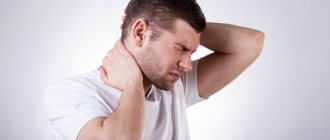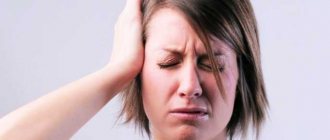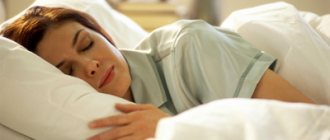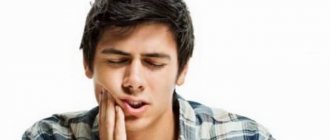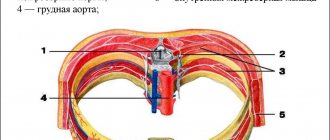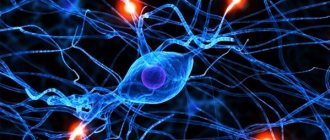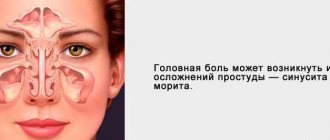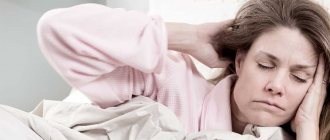Almost every person has had a headache at least once in their life, which had a different localization. If these pain sensations are observed over a long period and even intensify over time, then you need to contact a specialist - a neurologist, and undergo a thorough examination. This situation may indicate the development of some serious pathology.
If a patient has a headache in the left temple, this can reduce his performance and lead to a deterioration in his health. Painful sensations can be of a different nature, which will indicate the cause of this deviation:
1. The sensations are: constant, sharp, bursting, burning and others.
2. According to the period of manifestation, they are distinguished: episodic, periodic, chronic.
3. Intensity ranges from minor discomfort to strong sensations.
Infectious and neurological pathologies
In infectious diseases, the patient always experiences poisoning of the body with various substances and waste products of bacteria. Infections affect the vascular system and nerve cells, thereby provoking cephalalgia. Unpleasant sensations are diagnosed during the period of a cold, flu, sore throat or sinusitis. Also, in parallel, the patient will complain of other pronounced symptoms. In such a situation, it is worth going to a specialist for additional help and examination.
Also, severe pain is very often provoked directly by nervous overstrain. A patient may experience dull aching pain due to intense mental activity that is not accompanied by rest. In this situation, the patient becomes distracted and unable to think. In most cases, it is diagnosed in workers with a busy day or work activity. If acute intense pain occurs, then it is a migraine. It is accompanied by additional symptoms, such as:
1. Pain that can radiate to the nose, mouth, and eyes.
2. There are disturbances in auditory and visual function.
3. Problems with smell arise.
4. Dizziness.
5. The patient has a fear of bright light.
6. Nausea and vomiting.
Migraines can be periodic. In most cases, this type of headache cannot be treated with conventional analgesics. To get rid of migraines, you need to be examined by a neurologist who can prescribe the correct and safe course of therapy.
If the patient experiences pain, which is combined with unpleasant sensations in the eyebrows and lower jaw, then this may indicate trigeminal neuralgia. These sensations are in most cases localized on one side. Light touches can cause attacks of pain that will be shooting in nature.
Also, this type of pain can be provoked by vegetative-vascular dystonia. This pathology has a negative effect on the tone of the vascular system, which can lead to severe narrowing or, conversely, dilation of blood vessels, and in parallel affect blood pressure. Cephalgia with this pathology occurs in a patient with low blood pressure.
Traditional methods of treatment
Chamomile tea helps with pain in the left temple. To make chamomile tea, pour boiling water over it and let it brew for 15 minutes. Then consume it pure or with the addition of sugar or honey.
Chaga extract relieves long-term, severe and dull headaches. To make a tincture, dilute 2 tablespoons of chaga in 100 ml. warm water. Take the solution 2-3 times a day, one spoon.
Valerian helps with migraines. To prepare, grind valerian roots and add boiling water to a thermos. Let the product brew for 12 hours. Drink the tincture with a tablespoon 3-4 times a day.
Atherosclerosis of the vessels of the neck and brain. High blood pressure
Atherosclerosis is a chronic disease that affects large arteries. This pathology provokes an inflammatory process in the inner lining of the blood vessels, then cholesterol plaques begin to accumulate, resulting in a narrowing of the lumen. Atherosclerosis is diagnosed in almost every patient after 42 years of age. The progression of this disease can be influenced by various factors and abnormalities in the body.
Narrowed vessels and arteries in the cervical region and in the head become sensitive and in most cases provoke cephalgia. In this case, the patient may also have other symptoms: extraneous noise in the ears, nausea. It must be remembered that atherosclerosis is a disease that is constantly progressing and if timely treatment is not carried out, it can lead to irreversible consequences.
It is also necessary to remember that cephalgia is the first sign of high blood pressure, which is chronic. Hypertension can cause pain in the occipital and temporal regions. In this situation, the patient will feel drooping and weak. Dizziness may occur.
First aid for severe headache in left temple
Most people immediately open the first aid kit and take the usual analgin, Andipal, No-Shpu or other analgesics. Although non-drug medications can also quickly alleviate the condition:
- rubbing the temples with “Zvezdochka” ointment or “Bora” herbal balm. Natural medicines, proven by many generations, will relieve temple pain just as well as pills. And at the same time they are safe, have no contraindications, and do not put additional stress on the kidneys and liver. A massage will help you relax. Apply some ointment or balm to your index fingers. Using massaging circular movements, move along the temple area;
- cold compress. Soak a towel in cold water or wrap it in ice. Apply the compress to the painful area for 5 minutes. Cold will relieve spasm, dilate the blood vessels of the head in this area and provide a slight analgesic effect;
- take a rest. Lie flat on a bed or sofa with your head raised 45 degrees. To do this, place a pillow or cushion under your neck;
- take a relaxing shower. Jets of water will relieve tension and alleviate the condition.
- Do a breathing practice or meditation. Lying on the bed, close your eyes, take slow deep breaths, hold your breath for 5 seconds and exhale. Imagine yourself in a beautiful area with a balloon near your left sore temple. Make a slow countdown and at number “1” release the ball along with the pain. Take 3 deep breaths and exhales again and slowly open your eyes.
Osteochondrosis of the neck and vascular arteritis
Osteochondrosis of the neck can cause pinching of blood vessels and nerve cells that are directed to the head. In this case, the patient experiences impaired blood flow in the brain, resulting in unpleasant pain. Basically, the pain will only be on one side of the head.
Arteritis is a disease characterized by inflammation of the arterial walls. This disease is localized in the temporal region.
The inflammatory process can be triggered by injury, surgery, infectious, autoimmune diseases and processes. With arteritis, the patient experiences acute, burning, throbbing pain. Also, in parallel, a skin rash, itching, cephalalgia occurs, and body temperature becomes elevated.
Hormonal imbalance
Very often, cephalalgia in this area of the head occurs in women before menstruation. This symptom indicates PMS. Minor sensations should not become a reason for worry, especially during this period. But, you need to think about visiting a specialist if the pain becomes more intense, lasts longer and does not go away after taking painkillers. In most cases, these symptoms indicate a hormonal imbalance, so treatment and examination are required. These pains can be diagnosed in the female half of the population directly during menopause.
When to see a doctor immediately
If your head hurts with constant regularity, then the first thing you need to do is go to the doctor, and not make a diagnosis yourself and not take medications recommended by friends. But there are special cases when delaying contacting a specialist can significantly worsen the condition, and sometimes cost the patient’s life:
unusual, uncharacteristic pain appears in the temple; if the pain continues continuously for more than 3 days, and the strongest painkillers do not help; it seems as if a small grenade exploded in the temple and sudden pain is accompanied by impaired vision, speech, coordination of movements, general weakness; from an attack before the attack, throbbing pain in the temples manifests itself more and more clearly, gradually intensifying; the pain is accompanied by vomiting; the pain is aggravated during physical work or sports; with an increase in temperature and aching in the neck, the inability to turn or tilt the head; upper and lower pressure increases excessively.
After asking the patient about the types and frequency of pain, the doctor may prescribe additional examination:
You will need a general and detailed blood test; MRI of the brain; electroencephalography of the vessels of the neck and head; lipid profile; consultation with an ophthalmologist, therapist, psychiatrist, neurosurgeon, angiosurgeon.
Of course, such examinations are not cheap, but our health is also priceless, so saving in this case is inappropriate.
Oral diseases
The patient very often experiences cephalalgia due to the eruption of wisdom teeth, which can cause a lot of inconvenience. The sensation can also be triggered by carious tooth damage at the last stage, which affects the pulp. With dental diseases, trigeminal neuralgia can also be observed, which causes pain.
It is worth saying that pain also occurs with pathology of the temporal mandibular joint. If the patient has the listed symptoms, then it is necessary to immediately consult a specialist.
Neoplasms that have different localization
With an adrenal tumor, the patient may occasionally feel worse. This is explained by the fact that the neoplasm periodically releases an excessive amount of adrenaline into the blood, which causes spasm in the blood vessels and increases blood pressure. In parallel, the patient experiences the following symptoms: severe cephalgia, the duration of which can be from minutes to an hour or more.
With large formations in the brain, the patient is diagnosed with increased intracranial pressure, which is accompanied by constant bursting pain, nausea and vomiting. Problems with visual function may also occur.
Poor diet and poor lifestyle
If the patient eats properly, follows a rest and work schedule, then he will not have problems with headaches or general well-being. It must be remembered that with lack of sleep and constant fatigue, pain may occur in the temple area. It is also worth considering that the condition of blood vessels can be negatively affected by smoking, leading to spasms and high blood pressure. Alcohol in large quantities and its frequent consumption leads to a toxic effect on nerve cells. Alcohol intoxication can cause many unpleasant sensations. Long-term dieting and fasting leads to impaired nutrition of brain cells and a biochemical process.
Prevention
To prevent pain in the left temple from returning again, you must adhere to a daily routine, sleep at least 8 hours, not overwork, be in the fresh air more often, move actively, taking into account your age and physical condition, and eat rationally.
It is necessary to have breakfast; the diet should contain healthy foods: cereal porridge, boiled meat and fish, kefir, cottage cheese, bread with grain additives, natural fruit juices. In order to benefit your health, you need to give up spices, spicy and overcooked foods, and reduce your intake of salt and sugar.
Smoking and alcohol are provocateurs of various diseases, high blood pressure, and cerebral vasospasm. They also affect hormonal levels, especially in women, so their presence in a person’s life should be completely eliminated.
Morning exercises, physical therapy, sports - all this helps improve health, raises the quality of life to a new level, and improves mood. If you adhere to the basics of a healthy and correct lifestyle, you can minimize the possibility of headaches.
Headaches can indicate a huge number of different diseases, and without medical help it is almost impossible to deal with them. Also, pain in the temple on the left can have different and often unpredictable causes. Unfortunately, people suffering from such sensations often prefer to take a painkiller rather than be examined for hidden diseases. When the effect of painkillers wears off, the pain returns and intensifies, bringing more and more discomfort and problems.
An addiction to a certain series of tablets occurs, they no longer help, and on top of that, the body is poisoned by constant doses of chemical drugs, receiving new reasons for the occurrence of pain.
External factors
It is also very common to have a headache in the temple area due to the negative impact of environmental factors on a person. The shootings are caused by carbon monoxide poisoning, in such a situation it is necessary to provide the patient with urgent emergency assistance. Also, when you do not receive nutrients for a long time, cephalalgia occurs. Unpleasant sensations can also arise due to prolonged fasting, which can have a negative impact on all organs and systems of the body.
Pain can occur due to climbing a high mountain or flying in an airplane, as the pressure difference affects the temples. At the same time, the person experiences fear, nausea and vomiting.
